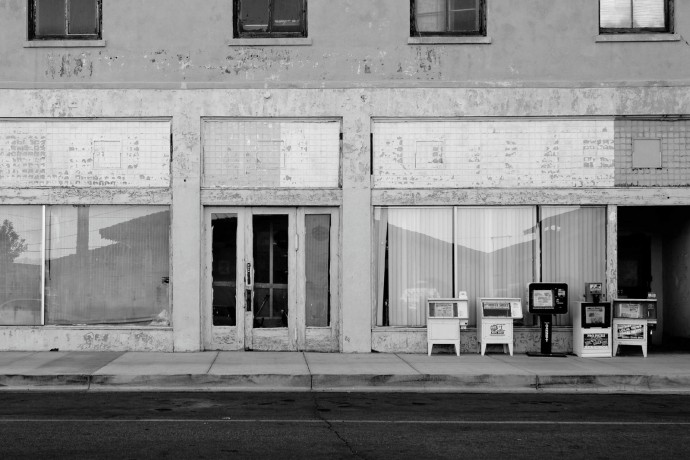Once again, RD’s editors have asked me to think about stories at the intersection of religion and culture that mainstream journalism passes over or treats inadequately. It takes a sour disposition to do this, and I’m pleased to say that mine qualifies. [We don’t agree, but we respect your right to self-definition. –The Eds.]
Here are some lines of inquiry one wishes mainstream journalism would pursue—or pursue with more brio.
1. What’s the real cash value of faith-based community organizing?
Faith-based community organizing (or FBCO to its initiates) is what the organizations that grew up following Saul Alinsky‘s playbook do. There are four major networks: PICO, Industrial Areas Foundation, Gamaliel, and DART. As competitive siblings, they tend to disparage one another.
Together they raise many millions of dollars from the congregations (often low-income congregations) they get to join up. They also soak up millions in foundation grants. They have well-trained and well-paid staff who never stop talking about “building power.” They are good at telling the people in the pews about what they are accomplishing in their behalf. But what do they actually accomplish? What’s the scorecard say, given the size and reach of these organizations?
For all I know, they accomplish a hell of a lot. But we shouldn’t take their word for it. Investigative journalism, anyone?
2. The struggle of the Black Church to come to terms with #BlackLivesMatter.
In some cities there has been visible conflict between Old Guard pastors (many of whom still identify with the 20th century civil rights movement) and the New Guard of fearless youth, many of whom are not shy about showing contempt for the pastors.
This is not just a story about intergenerational conflict; it’s about different visions of what a healthy African American response to white supremacy looks like in the 21st century. 3. Christianity’s obvious capacity to generate paranoia and hate.
3. Christianity’s obvious capacity to generate paranoia and hate.
This tends to get a pass in mainstream media. Reporters tend to believe faith leaders who simply repeat the mantra, “all religion is about peace and justice.” No, it’s not.
Every religion—Buddhism included—has its violent element. As for American Christianity, I thought it was telling that it took a journalist who is not primarily a religion writer, Stacy Schiff, to point a finger at the clear line of descent from the paranoid Puritans to today’s “keep them out” backlash against Muslims and all refugees from the Middle East.
4. Social media and spiritual life.
People have written a fair amount about social media’s impact on relationships and intellectual life but not so much on what we used to call devotional life. There’s a whole lot here that’s untapped so far.
5. The capacity of gun violence to awaken the sleepers.
Forgive the expression, but gun violence seems to be the one issue that triggers a deep-level horrified response from the American faithful.
People who wouldn’t dream of doing anything “political” will go to vigils and even write letters. But what does this really mean? And why does it stop short of looking at the underlying dynamics of hundreds of everyday shootings in places like the west side of Baltimore and the south side of Chicago?
6. Toilets.
“You can’t go in there!” riles up the righteous in Houston. But, on the other hand, hundreds of congregations are doing small group study on what “trans” means, and many of the faithful merely shrug at the idea of queer Scoutmasters, for God’s sake. Sexual difference seems to be much less frightening to ever larger swathes of American religious.
7. Religion and real estate.
It’s not just Union Seminary that’s in a pickle over “deferred maintenance.” It’s not even the fairly well-publicized struggles of other venerable religious institutions on the East Coast: General Seminary, the Cathedral of St. John the Divine, the National Cathedral, etc.
Out here on the Left Coast the famously progressive All Saints Church just gave up on a $50 million remake of its campus in the face of internal division and stiff resistance from preservationists who didn’t want to see a sleek Richard Meier building going up in the middle of the Pasadena’s historic Spanish Revival municipal center.
If there is such a creature as Satan, and if this creature really does live to mess around with God’s people, then may I suggest that his come-on line these days is, “Have you thought about what you could do with that underdeveloped parcel of yours?”
8. Yoga’s indeterminate status between “practice” and religion.
One would think journalists would be all over this. For the most part, they have not been. RD offered a snapshot of the topic, based on Andrea Jain’s excellent book. Otherwise, there’s not a lot of focus, especially in view of publication this past year of an important historical treatment, The Goddess Pose, by the always-superb Michelle Goldberg.
9. Liberation theology goes “poof”?
Maybe it’s out there, but I haven’t seen in-depth reporting on the reception of Pope Francis’s slight nod in the direction of the liberation theologians. This after a Little Ice Age of official Vatican hostility to the consciousness and the practice developed in Global South justice struggles.
The U.S. bishops, most of them appointed by John Paul II and Benedict, have not been seen rejoicing over the idea that liberation thought is at least discussable again; they are certainly not seizing the opening to lend any concrete support to current justice struggles that could use some liberationist framing. Of course, one still hears some liberationist discourse among some 70-year-old left-leaning Mainline Protestants, but they’re not any kind of force to be reckoned with.
Overall, it seems that the liberationist “moment” has passed, which is a little bit ironic in that many of us would prefer to see the viewpoint identified simply as “Christianity,” with no modifier required.
10. Pets in Heaven.
I’m only slightly kidding here, but Francis says he’s cool with it, and the furry ones already seem to be everywhere in spaces from which they were once automatically barred: airplane cabins and restaurants and supermarket aisles.
There’s a serious issue here, inasmuch as the church has always held that a basic qualification for entry through the pearly gates is the possession of an immortal soul. Ergo, opening the gates to four-footers kind of implies the possibility of actual soul in little Fifi, not merely the capacity for soulful looks (usually signifying hunger).
But please, no reptiles, or at least no snakes, in the heavenly precincts. Oh, and watch where you walk on those streets of gold.
___
I do, of course, have a bilious concluding “meta” critique of journalism about American religion, and here it is:
Nobody seems interested in writing about the biggest mystery of all: the fact that although the faith traditions we inherit are all about “we,” faith on these shores is overwhelmingly about “me.”
Here I will speak as a Christian writing in a special season. It’s not “unto me a child is born,” it’s “unto us.”
Put that in your holiday pipes and smoke it, scribes.





